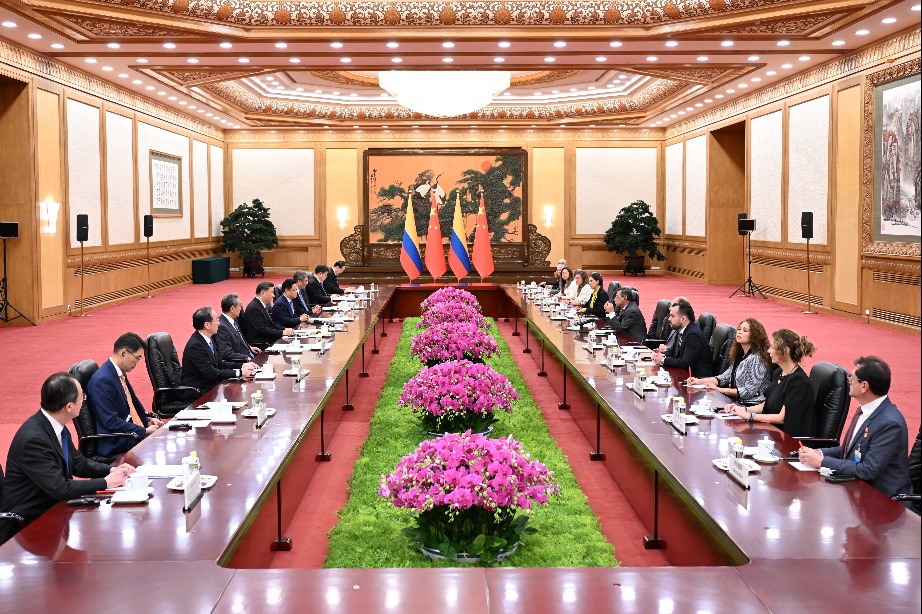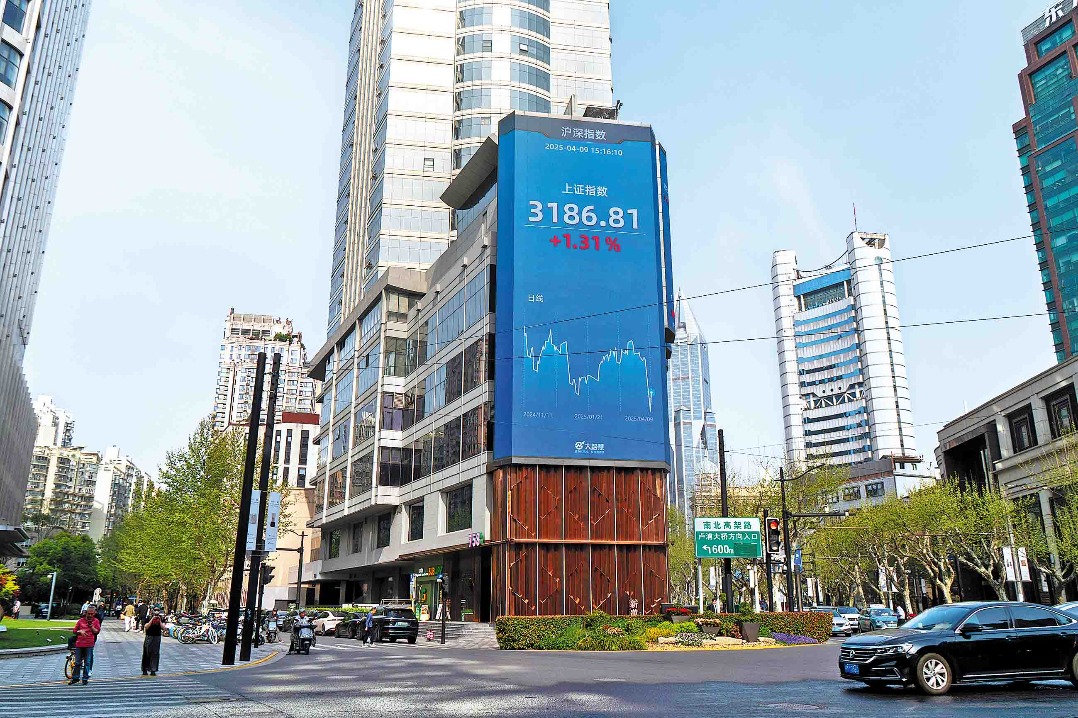Confronting real challenges


China-ASEAN's Comprehensive Strategic Partnership addresses food insecurity while the West prioritizes military bases, which can make the region a tinderbox of geopolitical power play
While the Association of Southeast Asian Nations is celebrating the 56th anniversary of its founding, 2023 also marks the 20th anniversary of China's accession to the ASEAN-initiated Treaty of Amity and Cooperation.
In retrospect, China, then a full-fledged dialogue partner of ASEAN, was the first non-ASEAN member state to sign the treaty that laid the foundation for the ensuing China-ASEAN cooperation.
The evolving relationship between ASEAN and its largest trading partner was elevated to comprehensive strategic partnership in 2021, in commemoration of the 30th anniversary of their dialogue relations.
The essence of the coming-of-age ties between China and ASEAN lies not in the nomenclature of a comprehensive strategic partnership per se, but more in the ensuing efforts to strengthen mutual trust through multi-dimensional capacity development and confidence building between China and its Southeast Asian neighbors.
In light of the robust growth in trading of goods and services between China and ASEAN year-on-year, the upward trend of economic collaboration remains upbeat. This trend would continue to make China and ASEAN the biggest trading partner of each other for many more years to come.
While economic cooperation continues to dominate the enduring ties, new drivers of cooperation are being brought to the table to help boost the post-COVID 19 economic recovery in the region.
Vaccine research and production, as well as poverty alleviation alongside the digital economy, green economy and blue economy, just to name a few, are all set to provide new avenues for the upcoming China-ASEAN collaboration, which is crucial to the realization of the ASEAN Community Vision 2025.
The vision, boosted by three pillars, namely the ASEAN Security Community, the ASEAN Economic Community and the ASEAN Sociocultural Community, is by itself a multi-dimensional endeavor that goes beyond sheer economics.
Nonetheless, amid the changing geopolitical dynamics across the world, sheer economics-driven collaboration may no longer be sufficient and sustainable to meet the rising aspirations in the region.
Against the prevailing backdrop of hostile wedge-driving between China and ASEAN by powers outside the region in the rising geopolitical face-off, the widening gulf of trust-deficit has emerged as a real litmus test to the nascent comprehensive strategic partnership.
Taking cognizance of the new challenges, the model of China-ASEAN cooperation can ill afford to stay static. It has to evolve multi-dimensionally and holistically to mitigate the impact of geopolitical dynamics. Track 2 diplomacy has never been in such a dire need to bridge the gap in trust-building. China, the nearest neighbor of ASEAN that has the most public goods to offer to humanity, deserves to be better understood and viewed in the right perspective.
In this context, trust-building is an imperative element in managing the comprehensive strategic partnership between ASEAN and China. Trust deficit that renders the comprehensive strategic partnership vulnerable to external onslaught must be efficiently arrested with determination.
Over the years, much has been talked about the people-to-people exchanges under the framework of Track 2 diplomacy. But this must not be misconstrued as synonymous to mere tourist exchanges, as the tourist arrival statistics do not necessarily translate into trust-building.
In this regard, it's imperative that both China and ASEAN seek to explore new frontiers of collaboration beyond economics and infrastructure development. Collective and respective concerns of the region and the individual member states have to be addressed unambiguously.
While nurturing China-ASEAN economic ties, collective concern over the potential risks of supply chain disruptions in the region remains real and threatening, notably after the bitter lessons learned at the height of the COVID-19 pandemic. The misgiving is further fueled when the risk is plausibly attributable to "over — dependence on China" by certain quarters.
This has prompted certain ASEAN member states to take a precarious position by straddling the delicate line of geopolitical rivalry between the Regional Comprehensive Economic Partnership agreement where China is the biggest economy and the United States-led Indo-Pacific Economic Framework for Prosperity.
In reality, the coming to fruition of the ASEAN-initiated RCEP provides a timely platform for the region to address the risk. With the inclusion of China, which is well equipped with a full gamut of industry and supply chains, the RCEP is visibly having the comparative edge vis-a-vis the IPEF in addressing any potential supply chain disruptions.
The IPEF may ironically fail to live up to the signatories' expectations.
With the deliberate exclusion of China, the framework has yet to find a viable alternative to the Chinese supply chain, though the IPEF Supply Chain Agreement was recently concluded with a proposed emergency response mechanism in the face of potential supply chain disruption.
Be that as it may, the proposed emergency response mechanism is no substitute for the desired supply chain. The disgraceful memory of indiscriminate scrambling for personal protective equipment in the US amid the outbreak still remains fresh and ugly across the world. Washington could have averted such a disaster which is not commensurate with its status as the reigning global power had it been well equipped with a stable supply of personal protective equipments. What's more, it is now burdened with a multilateral group of 14 others.
It is no secret that the US economic initiative has hitherto been viewed more as a geopolitical tool to clip China's wings of expansion than a viable economic solution to address the risk of supply chain disruptions.
Alongside this, security concerns continue to ride high on the ASEAN's agenda. A sense of sovereign insecurity lingers on in some ASEAN members which have been reliant on the US military presence in the region to address their security after establishing their own nationhood.
In this context, the inconclusive territorial maritime disputes over some parts of the South China Sea between China and a few ASEAN claimant states are indeed the sore point to address. They serve as a tool for the US to drive a wedge and alienate China from its Southeast Asian neighbors.
Under the prevailing perspective, all eyes are now on the Action Plan on the ASEAN-China Comprehensive Strategic Partnership (2022-25), which is dedicated to elevating the China-ASEAN cooperation and relations to the desired plane.
The ASEAN-China Year of Agricultural Development and Food Security Cooperation that rolled out in April 2023 is a new initiative added to the list of drivers for cooperation. It signifies the collective commitment of both China and ASEAN to addressing the potential risk of food insecurity — one of the key unconventional security risks — in the region of over 2 billion people. It contrasts starkly with the Western security priorities such as military bases, an arms race, defense spending and security pacts, all of which are sufficient to make the entire region a tinderbox of geopolitical power play.
The author is president of the Belt and Road Initiative Caucus for the Asia-Pacific and a senior fellow of the Taihe Institute, China. The author contributed this article to China Watch, a think tank powered by China Daily. The views do not necessarily reflect those of China Daily.
Contact the editor at editor@chinawatch.cn.































